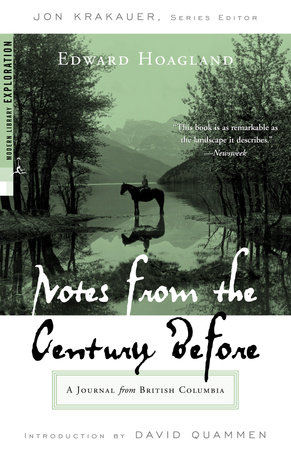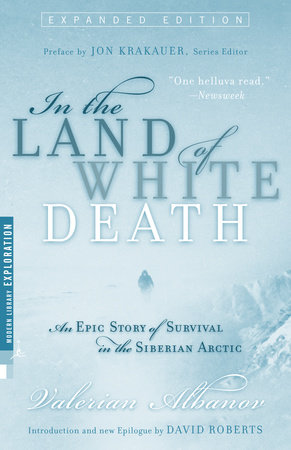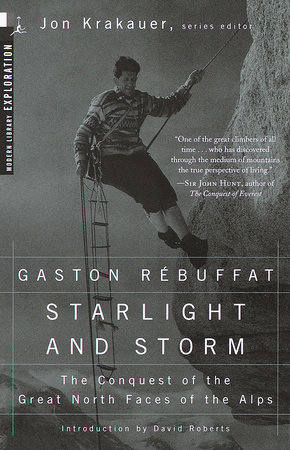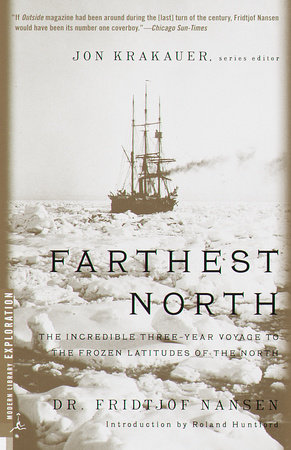Excerpt
Weird and Tragic Shores
CHAPTER ONECINCINNATI, NEW LONDON, AND NEW YORK
Charles Francis Hall was twenty-seven years old when he arrived in Cincinnati in 1849 with very little money, few possessions, and a young wife named Mary. Where he had come from and why, whether he intended to remain in Cincinnati or only to pass through it on his way farther west, is now unknown; like many other restless Americans of his time, he left no tracks until he finally paused in one place long enough for his name to appear in community records. What is known about his early life comes mainly from biographical sketches written after his death, and they are at least partly inaccurate: they all agree that he was born in Rochester, New Hampshire, in 1821, but his wife once mentioned in a letter that he was born in Vermont and moved to Rochester with his family when he was still a child.
The sketches all emphasize the rural simplicity of Hall's boyhood. His formal education was slight; after a few years at a local common school, he was apparently apprenticed to a blacksmith. Several of the sketches insist that he read assiduously on his own, and they evoke the image of a young Lincoln, a youth in homespun reading by firelight. "And thus he plodded his way along," one sketch elaborates, "like many another dreamy lad whose heart and aim is all beyond, and outside of, his daily occupations." The author of that sketch sees some advantage in Hall's early days as a blacksmith, however: "Though not much to his taste, this heavy work assisted him materially in developing his muscles and hardening his constitution, thus indirectly helping to fit him for the arduous adventures of his later years."
At this phase of Hall's life, his early youth, all the sketches become vague. Even the most detailed contains only two sentences covering the next five or six years: "While yet a young man, he left his native place, and with it the blacksmith's trade. Setting his face westward, after some experiments elsewhere, he settled in Cincinnati. What and where were those "experiments elsewhere"? Did Hall go to New York or Boston (a C. F. Hall appeared in the Boston City Directory of 1843 and 1844) to experience city life and learn a new trade, or did he set out west immediately, moving slowly toward Cincinnati, "experimenting" along the way? Whatever he did, he left no evidence behind him; he was an obscure wanderer, one of the thousands of nameless digits in statistics on population shifts. So far as documentary history is concerned, Hall did not exist until his name appeared in the Cincinnati city directory of 1849: "Hall Charles F, southside 5th, between Park and Mill."
Considering Hall's later career as an explorer, it is tempting to see him at this stage in his life as a young frontiersman who moved west to challenge the great wilderness, but if he had intended to become a frontiersman, Cincinnati at mid-century would have been a disappointment. It was a booming city. If its suburbs across the Ohio are included in the count, its population was almost two hundred thousand. On the site of the old Fort Washington, which had defended the early settlement against Indians, sprawled a gaudy symbol of Cincinnati's growth, the pseudo-Oriental Bazaar built by Mrs. Frances Trollope in 1829 to supply Cincinnatians with the frippery that she thought they needed to become civilized. The store had failed, embittering the already caustic Mrs. Trollope against the city, but the building remained as a monument to her personal failure at commerce in a city rich with commercial success. In spite of Mrs. Trollope's criticism of the city's crudity, even in her time Cincinnati had outgrown the austere frontier stages of its development, and by mid-century it could afford all the luxuries of civilization. It was booming enough to support both the sacred (almost one hundred churches and several theological seminaries, including the famous Lane) and the profane (twenty-eight whiskey distilleries and twenty-one breweries). In education it was in advance of many eastern cities: not only did it have thirty primary and secondary schools, it also had three colleges, four medical schools, and a law school. Perhaps educational institutions, churches, and whiskey distilleries are necessities and do not indicate an advanced civilization. Clearly not a necessity are artificial flowers, and Cincinnati had three manufactories of artificial flowers, employing forty persons who were devoted to gracing the rooms of Cincinnati Society with their products. By mid-century Cincinnati had a rich and elegant, if not an old, Society. As early as 1834, Charles Fenno Hoffman, visiting from New York, wrote to a friend: "What would most strike you in the streets of Cincinnati would be the number of pretty faces and stylish figures one meets in the morning. I have had more than one opportunity of seeing these western beauties by candle-light, and the evening display brought no disappointment to the morning promise." The ladies organized receptions and masquerades, sometimes held in their spacious houses, sometimes in the ballroom on the third floor of the Bazaar, or, after 1850, in the newly built Burnet House.
Someone, of course, had to pay the piper: the ladies' industrious husbands. Above all else, Cincinnati was a commercial and industrial city. Its residents were never allowed to forget that its schools, churches, mansions, and hotels, its elegance and dawning intellectuality, were dependent on its economic expansion. The pigs that were driven through its streets to be slaughtered in its abattoirs were a constant reminder of one of its nicknames: "Porkopolis." A British woman wrote, "Cincinnati is, literally speaking, a city of pigs. Alive and dead, whole and divided into portions, their outsides and their insides, their grunts and their squeals, meet you at every moment."' By mid-century its meat-packing business had become the largest in the world. The stench from its tanneries, the smoke from its foundries, the din from its steamboat factories-these, too, were reminders of where the schools and the artificial flowers came from. Cincinnati had banks, investment houses, insurance companies, and even a business school, but pure finance was secondary to manufacturing. Here William Procter met James Gamble, in 1837 amalgamating their small candle and soap factories; here John Brunswick began to make billiard tables, Charles and Maximilian Fleischmann yeast, and Dietrich Gruen watches. It was a city of makers, delighting in the technological revolution that was changing America, fascinated by the machines that were making it rich. In 1850 Cincinnati was a frontier only in a new, metaphorical sense of the word, a frontier of business and technology.
In our national myth, western migration is pictured as rural, but in fact such cities as Cincinnati, St. Louis, and San Francisco attracted many more migrants than did the open land. If Charles Francis Hall had come west to blaze trails or to hack farmland out of wilderness, he had come to the wrong place. But there is no reason to think that he had intended to become a frontier scout or a pioneer farmer. Hall probably was tired of country life when he left the infertile hills of New England, and a growing western city would have offered him more excitement and opportunity than the wilderness. For ten years he not only accepted Cincinnati as his domicile, he actually seemed to revel in its enterprising spirit.
His career there began modestly enough. He and his wife settled in a boardinghouse on the city's west side. Somewhere he had picked up the semiskill of seal-die molding (a molder cast the work of engravers into the metal dies that were used in seal presses), and soon he was working with a highly skilled engraver, Benjamin C. True. For three years Hall worked in True's seal-engraving shop, learning a business that was far more important in the nineteenth century than it is today. Nowadays we see embossed seals only when we go to a notary, but in the last century they were used not only by notaries but also by businesses, both as official stamps and as advertising devices. Beautifully embossed seals on stationery and envelopes were the equivalent of today's engraving in establishing the tone of a company. Cincinnati, with its multitude of new companies, supported five seal-engraving businesses in 1850.
As Hall's later career shows, he was not a man to work for (or indeed, with) anyone else: independence was for him a way of life that became an obsession. After three years with True, he went into business on his own. He found a sizable workshop on Fourth Street, in the center of Cincinnati's business district, and there with considerable fanfare set up "Hall's Engraving Rooms." It is improbable that Hall had learned much about the fine craft of seal- and line-engraving during his three years with True, skilled as that artisan was. Hall admired both craftsmanship and technology, but he lacked the long training and the skill to succeed in either; undoubtedly he was capable of engraving simple seals, but he was essentially an entrepreneur during his years in Cincinnati, a dealer in other men's skills. On the finest "Hall" seal now in the Smithsonian Institution are carved the tiny initials "B.C.T" and "True F[ecit]." Teacher apparently worked for ex-pupil. Pupil, in time, would honor teacher by giving his name to a small cape far to the north of Cincinnati.
Hall had the shrewdness to raise the capital necessary to start his business, and the energy to expand it as time passed. He was a promoter, the only engraver in the city to take full-page advertisements in the city directory year after year. These advertisements, gorgeously printed in various typefaces and illustrated with samples of Hall's seals (sometimes actually embossed on the page), indicate the sort of work that his shop did as he enlarged his business. SEAL ENGRAVING IN ALL ITS VARIETY," one announces:
Particular attention given to designing, engraving and blazoning appropriate Coats of Arms, for corporate bodies, civil and ecclesiastic; Crests and Arms of ancient families sought and engraved; Copperplate Engraving and Printing, such as Marriage, Business and Address Cards, Notes, Drafts,&C. ENVELOPE DIES, PLAIN AND ELABORATE. Self-sealing advertising envelopes [self-sealing envelopes were a novelty at the time], colored Embossed cards, Book Titles, Boot and Hat-tip stamps, Steel Stamps for silversmiths, boiler manufacturers, carpenters, &c. Bankers, Post Office and Steamboat Stamps, with complete inking apparatus for the same; Hall's Improved Percussion and Lever Seal Presses; a complete assortment of English, French and German plain and fancy Billet Paper Envelopes, suitable for weddings, balls, parties, &c.&c.; Cake Boxes, and every description of Wedding Stationery; jewelry and Silver plate marking for the trade.
Behind the "Hall's Improved Percussion Press" mentioned in this advertisement lay a story that revealed something of Hall's character: the man was combative. In this case, his ire was roused by a patent. Most seal presses of the time were either lever- or screw-driven; the operator placed the document to be embossed between the dies, and then pressed down on a lever or turned a screw to squeeze them together. Such machines, likely to weigh ten pounds or more, were cumbersome, expensive, and, in the case of the screw press, slow. In the late 1840's two Cincinnati inventors, E. P. Cranch and James Foster, designed a small percussion press that could be worked with a light blow of the hand, rather like a stapler. Although considerable ingenuity was displayed in the design, the Patent Office turned down Foster's first application for a patent because the mechanical devices involved were not original. Foster reapplied a few years later, arguing persuasively that although the devices were not new, they were being used for a new purpose. Although Foster filed the application himself, he had by then sold the rights to the device to one Platt Evens; Evens's attorney immediately wrote to the Patent Office to make it clear that Evens had been assigned the rights even though Foster was making the application. Foster did not contest Evens's claim. At this point, just as the Patent Office was about to award the patent to Evens, it received an angrily scrawled letter from Charles Francis Hall. "I am deeply interested in this matter," Hall wrote, "as I have now been engaged over two years in the Manufacture and Sale of Percussion Presses & Seals. In fact to my efforts is to be attributed the extensive notoriety the article enjoys." Hall went on to claim that Evens had worked with him in his engraving business for a year, during which time he had "taken money from my hands" to purchase the rights to Foster's device and had agreed to give Hall one-half ownership. Moreover, by "flattering promises" he had induced Hall to put money into manufacturing and selling the device under the name of "Evens' Percussion Press." Evens had left Hall's establishment in the previous year and now was in business on his own, selling his press as "Evens' Patented Press." Did Evens actually have a patent, Hall asked, or was the name simply an advertising gimmick?'
The Patent Office replied that Evens did not yet have a patent, and Hall immediately began a campaign against Evens, using the facilities of his printing shop. A broadside flyer appeared from Hall's Engraving Rooms, boasting of the new "Hall's Improved Percussion Press" and accusing Evens of "acts little short of perjury":
This invention was not introduced to the public until the year 1851, when its many virtues becoming known, C. F. Hall, Seal Engraver of Cincinnati, believing its adaption complete to the wants of the business community, immediately took it up and gave it notoriety under the name and title of "Evens' Percussion." Although Evens never invented even an improvement on the Percussion Press, yet C. F. Hall was INDUCED to call it "Evens" from this, his only reason-To SILENCE THE CONSTANT IMPORTUNITIES of one, whose insatiate desire was to become FAMOUS on the strength of other men's inventions at C. F. HALL'S OWN ENTIRE EXPENSE. There never was a PATENT GRANTED on any Percussion Press, notwithstanding BOLD efforts are being made by certain or UNCERTAIN parties to DECEIVE the public in the matter. Vindictive feeling, coupled with a strong love of gain and fame sometimes carries people beyond reason and law-both have been outraged by a RUSE notice [Evens's advertisement claiming that his press was patented] and in DECEIVING U.S. Government Offices by acts little short of perjury.
Clearly Hall was not a man to meddle with; aroused, he was capable of intemperate words and, as his later career showed, intemperate action.










